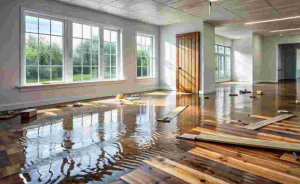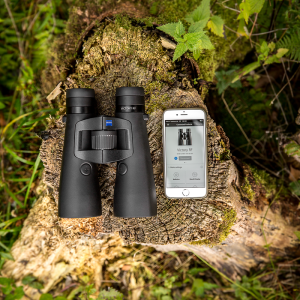Creating an outdoor sanctuary that reflects your personal style while enhancing your property’s value requires thoughtful planning and the right materials. Among the most versatile and enduring elements in landscape design, stone stands out as a timeless choice that combines functionality with aesthetic appeal. Whether you’re reimagining your entire yard or adding finishing touches to existing features, understanding how to select and incorporate stone elements can elevate your outdoor environment from ordinary to extraordinary.
The Foundational Role of Stone in Landscape Architecture
Stone has been integral to landscape design for centuries, serving purposes that extend far beyond mere decoration. These natural elements provide structure, define spaces, manage erosion, and create visual interest throughout the seasons. Unlike many landscaping materials that deteriorate or require frequent replacement, quality stone installations can last decades with minimal maintenance, making them both an environmentally conscious and economically sound investment.
The psychological impact of incorporating natural stone into outdoor spaces shouldn’t be underestimated. Research in environmental psychology suggests that natural materials create a sense of permanence and connection to the earth, reducing stress and promoting relaxation. When you walk through a garden punctuated with carefully placed stone features, you’re experiencing design that speaks to something fundamental in human nature—our innate connection to the natural world.
Understanding Your Landscape’s Unique Requirements
Before selecting materials for your project, take time to assess your property’s specific characteristics. Soil composition, drainage patterns, sun exposure, and existing vegetation all influence which stone types will perform best in your environment. A shaded woodland garden calls for different materials and arrangements than a sun-drenched Mediterranean-style courtyard.
Consider the functional requirements of each area in your landscape. Pathways need stones with different characteristics than water features or decorative borders. High-traffic areas demand durability and stability, while ornamental sections can prioritize aesthetic qualities. Climate factors also play a crucial role—freeze-thaw cycles in northern regions require stones with low porosity to prevent cracking, while hot, arid climates benefit from lighter-colored stones that reflect heat rather than absorb it.
Creating Visual Harmony Through Color and Texture
The color palette of your stone selections establishes the mood and character of your outdoor space. Warm earth tones—russets, ambers, and terracottas—create welcoming, cozy environments that complement traditional architecture. Cool grays, blues, and slate tones lend themselves to contemporary designs with clean lines and minimalist sensibilities. Many successful landscapes incorporate a restrained color palette, using two or three complementary stone colors to create cohesion without monotony.
Texture adds another dimension to landscape design, influencing both visual appeal and practical considerations. Smooth, polished surfaces reflect light and create formal, refined atmospheres, while rough-hewn natural faces provide rustic charm and better traction on pathways. Mixing textures within a single project adds depth and interest—imagine smooth river rocks accentuating the rugged beauty of larger boulders in a naturalistic garden setting.
Practical Applications Across Your Property
The versatility of decorative landscaping stones allows them to serve multiple purposes throughout your outdoor environment. Garden beds benefit from stone borders that prevent mulch migration while creating clean delineation between planted areas and lawns. These boundaries also discourage grass encroachment, reducing maintenance time spent on edging.
Water management represents another critical application. Dry creek beds constructed with carefully graded stones provide attractive solutions for drainage issues while adding visual interest even when dry. These features mimic natural watercourses, guiding rainwater away from foundations and preventing erosion. When water does flow, the stones create pleasant sounds and movement that enliven the space.
Retaining walls built with appropriate stone materials transform sloped properties into functional, multi-level gardens. These structures prevent soil erosion, create planting opportunities, and add architectural dimension to landscapes. Whether constructed as formal stacked walls or informal boulder arrangements, stone retaining features become permanent focal points that age gracefully.
Installation Considerations for Lasting Results
Proper installation separates projects that endure from those that disappoint. Site preparation forms the foundation of success—literally. Adequate excavation, compacted base materials, and appropriate edging ensure stones remain in place through seasonal changes and weather events. Landscape fabric beneath stone applications prevents weed growth while allowing water permeation, maintaining the clean appearance that makes stone features so appealing.
Drainage considerations can’t be overlooked, even in decorative applications. Stones placed directly on clay soils without proper base preparation may shift or sink over time. A well-constructed base of crushed stone or gravel provides stability while facilitating water movement, preventing the pooling that can undermine even the most beautiful designs.
Scale and proportion deserve careful attention during planning. Oversized boulders can overwhelm small gardens, while tiny pebbles get lost in expansive landscapes. The stones you select should relate appropriately to the overall size of your property and the scale of surrounding elements like plants, structures, and hardscaping features.
Maintenance and Long-Term Care
One of stone’s greatest advantages lies in its low maintenance requirements. Unlike wood that rots, or concrete that cracks and stains, natural stone weathers beautifully, often improving in appearance over time. Regular sweeping or blowing removes organic debris, while occasional rinsing keeps surfaces fresh. Weeds that appear between stones can be addressed with manual removal or targeted application of landscape-safe solutions.
As plants mature and landscapes evolve, stone features provide permanent structure that anchors changing compositions. Trees may grow, perennials may be replaced, and design trends may shift, but thoughtfully placed stone elements remain constant, providing continuity through all these transformations.
Conclusion
Incorporating stone into your landscape design represents an investment in beauty, functionality, and long-term value. By carefully considering your property’s unique characteristics, selecting appropriate materials that complement your vision, and ensuring proper installation, you create outdoor spaces that serve and delight for generations. The timeless appeal of natural stone, combined with its practical benefits, makes it an essential element in thoughtful landscape design.










